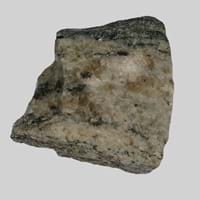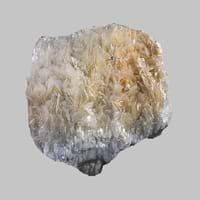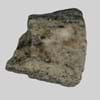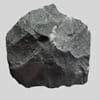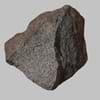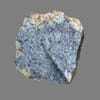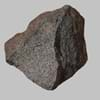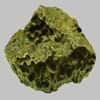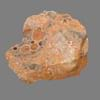Definition
Litchfieldite is a rare igneous rock which is coarse-grained, foliated and a variety of nepheline syenite, sometimes also called as nepheline syenite gneiss or gneissic nepeheline syenite
Talc carbonate is nothing but a rock sequence or a mineral composition found in metamorphic ultramafic rocks.
Origin
USA
China, USA, Middle east
Discoverer
Bayley
Unknown
Etymology
From its occurrence at Litchfield, Maine, USA
From medieval Latin, talcum
Class
Igneous Rocks
Metamorphic Rocks
Sub-Class
Durable Rock, Medium Hardness Rock
Durable Rock, Soft Rock
Group
Plutonic
Not Applicable
Other Categories
Coarse Grained Rock, Opaque Rock
Fine Grained Rock, Opaque Rock
Texture
Granular
Very Soft
Color
Brown, Buff, Cream, Green, Grey, Pink, White
Colourless, Grey, White
Durability
Durable
Durable
Scratch Resistant
Yes
Yes
Appearance
Banded and Foilated
Soft
Interior Uses
Countertops, Decorative Aggregates, Flooring, Interior Decoration
Decorative Aggregates, Interior Decoration
Exterior Uses
As Building Stone, As Facing Stone, Garden Decoration
Garden Decoration
Other Architectural Uses
Curbing
Powder
Construction Industry
As Dimension Stone, Cement Manufacture, Construction Aggregate, for Road Aggregate, Landscaping, Making natural cement, Manufacture of Magnesium and Dolomite Refractories, Production of Glass and Ceramics
Source of calcium
Medical Industry
Not Yet Used
Taken as a Supplement for Calcium or Magnesium
Antiquity Uses
Artifacts, Monuments, Sculpture
Artifacts, Jewellery, Monuments, Sculpture, Small Figurines
Commercial Uses
Creating Artwork
Manufacturing of baby powder
Types
Borolanite and Litchfieldite
Not Available
Features
Application of acids on the surface causes cloudy frosting, Available in Lots of Colors and Patterns, Dissolves in hydrochloric acid, Is one of the oldest rock
Easily splits into thin plates, Generally rough to touch, Host Rock for Lead
Archaeological Significance
Famous Monuments
Data Not Available
Data Not Available
Famous Sculptures
Data Not Available
Data Not Available
Petroglyphs
Used
Not Used
Formation
Litchfieldite is a fine-grained, hard rock which is a type of metasomatite, essentially altered basalt. It forms with or without crystallization, either below the surface as intrusive rocks or on the surface as extrusive rocks.
Due to change in environmental conditions, rocks are heated and pressurized deep inside the Earth's surface. Talc Carbonate is formed from the extreme heat caused by magma or by the intense collisions and friction of tectonic plates.
Mineral Content
Albite, Amphibole, Biotite, Cancrinite, Feldspar, Hornblende, Plagioclase, Pyroxene, Sodalite
Carbonate, Chlorite, Magnesium
Compound Content
Aluminium Oxide, CaO, Iron(III) Oxide, FeO, Potassium Oxide, MgO, MnO, Sodium Oxide, Phosphorus Pentoxide, Silicon Dioxide, Titanium Dioxide
CaO, Carbon Dioxide, MgO
Types of Metamorphism
Burial Metamorphism, Cataclastic Metamorphism, Contact Metamorphism, Impact Metamorphism
Burial Metamorphism, Cataclastic Metamorphism, Contact Metamorphism, Hydrothermal Metamorphism, Impact Metamorphism
Types of Weathering
Biological Weathering, Mechanical Weathering
Not Applicable
Types of Erosion
Coastal Erosion, Water Erosion, Wind Erosion
Not Applicable
Grain Size
Coarse Grained
Fine Grained
Fracture
Conchoidal to Uneven
Flat
Porosity
Less Porous
Less Porous
Luster
Greasy to Dull
Pearly
Toughness
Not Available
1
Specific Gravity
2.6
2.86
Transparency
Translucent to Opaque
Translucent
Density
2.6 g/cm3
2.8-2.9 g/cm3
Specific Heat Capacity
Not Available
Resistance
Heat Resistant, Impact Resistant, Wear Resistant
Heat Resistant, Wear Resistant
Deposits in Eastern Continents
Asia
Not Yet Found
Not Yet Found
Africa
South Africa
Ethiopia, Ghana, Western Africa
Europe
Finland, Norway, Portugal
England
Others
Not Yet Found
Not Yet Found
Deposits in Western Continents
North America
Canada
Canada, USA
South America
Brazil
Argentina, Bolivia, Uruguay
Deposits in Oceania Continent
Australia
Not Yet Found
Central Australia, South Australia, Western Australia
